For this critical play, I played the quintessential early iOS puzzle game: The Room 1, developed by Fireproof Games. I fondly remember going to the Apple Store and doing nothing but try to figure out how to solve each one the various puzzles and marveling at how compact it was such that everything fit on a small safe. Nostalgia aside, this class has allowed me to see more deeply beyond the superficial aesthetics of the game, and more into why the mechanics make this game fun. I believe this dynamic in age difference highlights the target audience of this game: anyone that likes puzzles is their target audience, no matter the age. However, the whole point is kind of moot if it isn’t fun in the first place, which thankfully it is. I believe that many of its mechanics are the driving force behind the fun, including the embedded (and evocative) narrative, interaction loops, and its uniquely gamified architecture.
The Room doesn’t pull any punching by trying to hide its narrative: the second ever thing the player does in the game is examine a letter inside an envelope that kickstarts the entire saga. Unlike Nox, the game I played as my mystery game for last week’s critical play, which tried to mystify its narrative through sporadic hints via the key objects (and nothing more until the end of the game) and letting the player try to decipher any meaning within, The Room does the exact opposite by announcing the presence of lore right at the beginning. While they are two completely opposite and valid aesthetics, I appreciated the straightfowardness, as it gave me a purpose to explore, to find out what “the key to incomprehensible power” is. This narrative is kept up through a more obscure, but still strongly present evocative narrative that weaves itself throughout the puzzles. For example, literally the first puzzle has the player looking for the fire engraving among a set of the four elements of fire, earth, water, and air. This, combined with other hints such as the abandoned church-like attic and frosted window evokes a sense of mysticism and the supernatural, which fits right in with the goal of finding some “incomprehensible power,” to say nothing of the archaic symbols when you put on the eyepiece and overall ornate decorations.
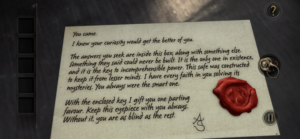
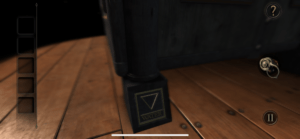
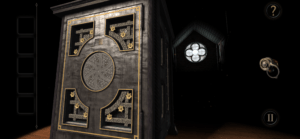
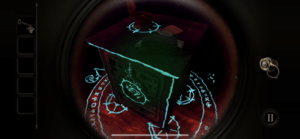
Last week, I played Nox as my mystery game. While these games have quite different premises, I think there is one aspect for me that makes The Room stand out beyond Nox. One of the main interaction loops for both games is being able to interact with objects of interest close up through tapping. However, one of the main differences is that with Nox, one tap is enough to point your camera to an object, but with The Room, you need to double tap. This additional step for invocation is beneficial as a whole for puzzle games like these as it disincentivizes a strategy that I used in Nox when I got stuck and was too stubborn to ask for a hint: carpet tapping until I found something of interest. Thus, the design of this interaction loop, unlike that in Nox, encourages the player to think more rather than guess and check.
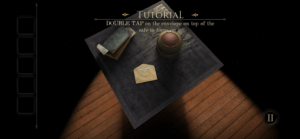
Finally, the uniquely gamified architecture provides another layer to the fun of this game. One of the most important points in the paper is that there is a clear distinction between the role of architecture in game versus IRL, something that is prominently on display here. On the back of the safe is a plaque that guarantees protection from thieves or fire, of which one of them is clearly incorrect. Thus, while privacy and protection are two key parts of real-life architecture, these factors clearly aren’t in games. In fact, the architecture is designed in such a way that can be solved by anyone, a defect that surely would leave safe manufacturers in a hurried state of recalling their products in real life. However, in a game context, this is kind of the whole point of the game, not counting the fact that it adds to the player’s sense of egoism playing the game by giving them a feeling of outsmarting a seemingly unbreakable safe or the fantasy (type of fun!) of being a detective and watching all the clues fall into place through a clever contraption.

Through three different mechanics: narrative, interaction loops, and architecture, The Room is able to captivate players and provide a great sense of fun through its limited boundaries of being in literally just one room in the game (formal element!).



